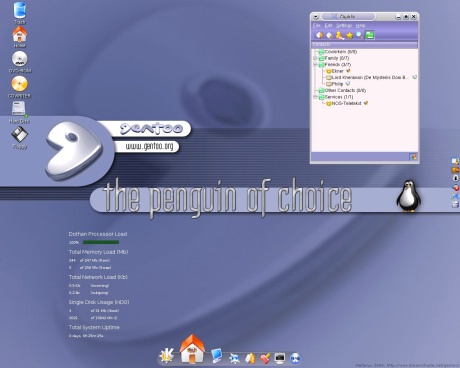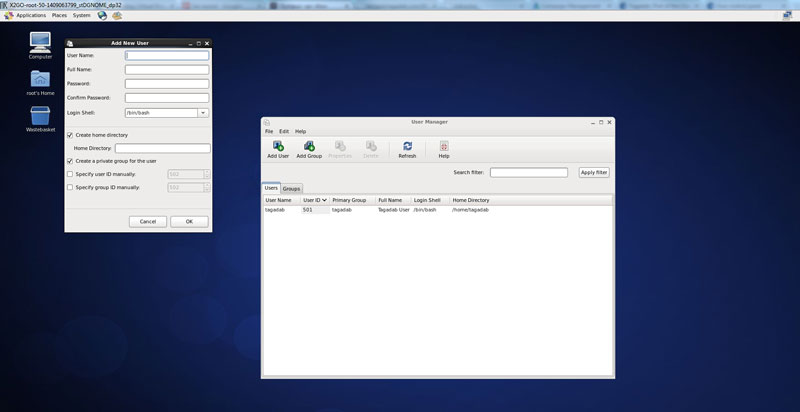
- #VIRTUAL PC FOR LINUX HOW TO#
- #VIRTUAL PC FOR LINUX SOFTWARE#
- #VIRTUAL PC FOR LINUX WINDOWS 8#
- #VIRTUAL PC FOR LINUX WINDOWS 7#
- #VIRTUAL PC FOR LINUX DOWNLOAD#
It’ll create a copy of the running Windows system as a VHD file, and you can take that VHD file to another computer and run it in Hyper-V - the converted physical system should boot up just fine as long as you launch it in Microsoft’s own Hyper-V virtual machine software. You’ll be able to select which partitions and drives you want to include in the VHD file. Run this tool on the Windows system you want to convert.
#VIRTUAL PC FOR LINUX WINDOWS 8#
This utility will convert a running Windows system to a VHD (virtual hard drive) file for use in Microsoft’s virtual machine products, such as the Hyper-V virtual machine tool included with professional versions of Windows 8 and 8.1. Microsoft offers a Disk2vhd tool - one of their many useful SysInternals utilities.
#VIRTUAL PC FOR LINUX HOW TO#
RELATED: How to Create and Run Virtual Machines With Hyper-V Save that virtual machine to an external hard drive and boot it up on a different computer. The utility will then create a virtual machine from the current Windows system, modifying it so it will boot properly in a virtual machine program. Choose a VMware Workstation, VMware Player, or VMware Fusion virtual machine as the destination and configure the options for the virtual machine. Click the “Convert machine” button on the toolbar and select the current, powered-on computer as the source. The Hyper-V Server is built with components of Windows with an included Windows Server Core user experience.Download vCenter Converter from VMware and launch it on the computer you want to turn into a virtual machine. The Hyper-V does not virtualise audio hardware, and does not require users to have an existing installation of Windows Server 2008 or R2.

Hyper-V carries out the isolation of virtual machines in terms of a partition, a logical unit of isolation that is supported by the hypervisor that each operating system executes in. Hyper-V, formerly named Windows Server Virtualisation, is a hypervisor designed to create virtual machines on x86-64 systems running Windows.Ī server computer that runs Hyper-V can be configured to expose individual virtual machines to one or more networks. Whereas, VMware’s Workstation Player is ideal for personal use, offering a quick installation and integration between operating systems is seamless. The Workstation package is particularly more suitable for professional users who would need a powerhouse virtual machine that is capable of simultaneously running applications on multiple guest operating systems. Its VMware Player is able to run all existing virtual appliances and also create its own virtual machines, using the same virtualisation core as VMware Workstation.
#VIRTUAL PC FOR LINUX SOFTWARE#
VMware Workstation Player is virtualisation software packaged for 圆4 computers running Microsoft Windows or Linux that is offered free of charge by VMware. KVM is open source software and the kernel component of KVM is included in mainline Linux. Each virtual machine has an individual private virtualised hardware like a network card, disk, graphics adapter and others.


To enable KVM to work effectively, a processor is required with hardware virtualisation extensions.

KVM originally supported x86 processors and an ARM port, before being merged during the 3.9 kernel merge window.Ī selection of guest operating systems is supported with KVM such as, different versions of Linux, BSD, Solaris, Windows and more. Kernel-based Virtual MachineĪ Kernel-based Virtualisation Machine is a virtualisation infrastructure for Linux kernel which develops into a hypervisor. Linux-based guests can also be installed in Virtual PC these include RedHat and SUSE Linux, some of which must be installed in text mode as they do not support the Virtual PC’s graphics chip.
#VIRTUAL PC FOR LINUX DOWNLOAD#
The Windows Virtual PC can be accessed by either being installed by OEMs or via direct download from Microsoft’s website. The Virtual PC is able to virtualise a standard IBM PC compatible device and all associated hardware, with the ability to enable supported Windows operating systems to run inside it.
#VIRTUAL PC FOR LINUX WINDOWS 7#
It does not run on versions earlier than Windows 7 and does not support MS-DOS or operating systems earlier than Windows XP Professional SP3. Windows Virtual PC is a freeware virtualisation program designed for Microsoft Windows. The software functions offer 3D virtualisation, multi-screen resolutions and laudable hardware support with other features included.


 0 kommentar(er)
0 kommentar(er)
